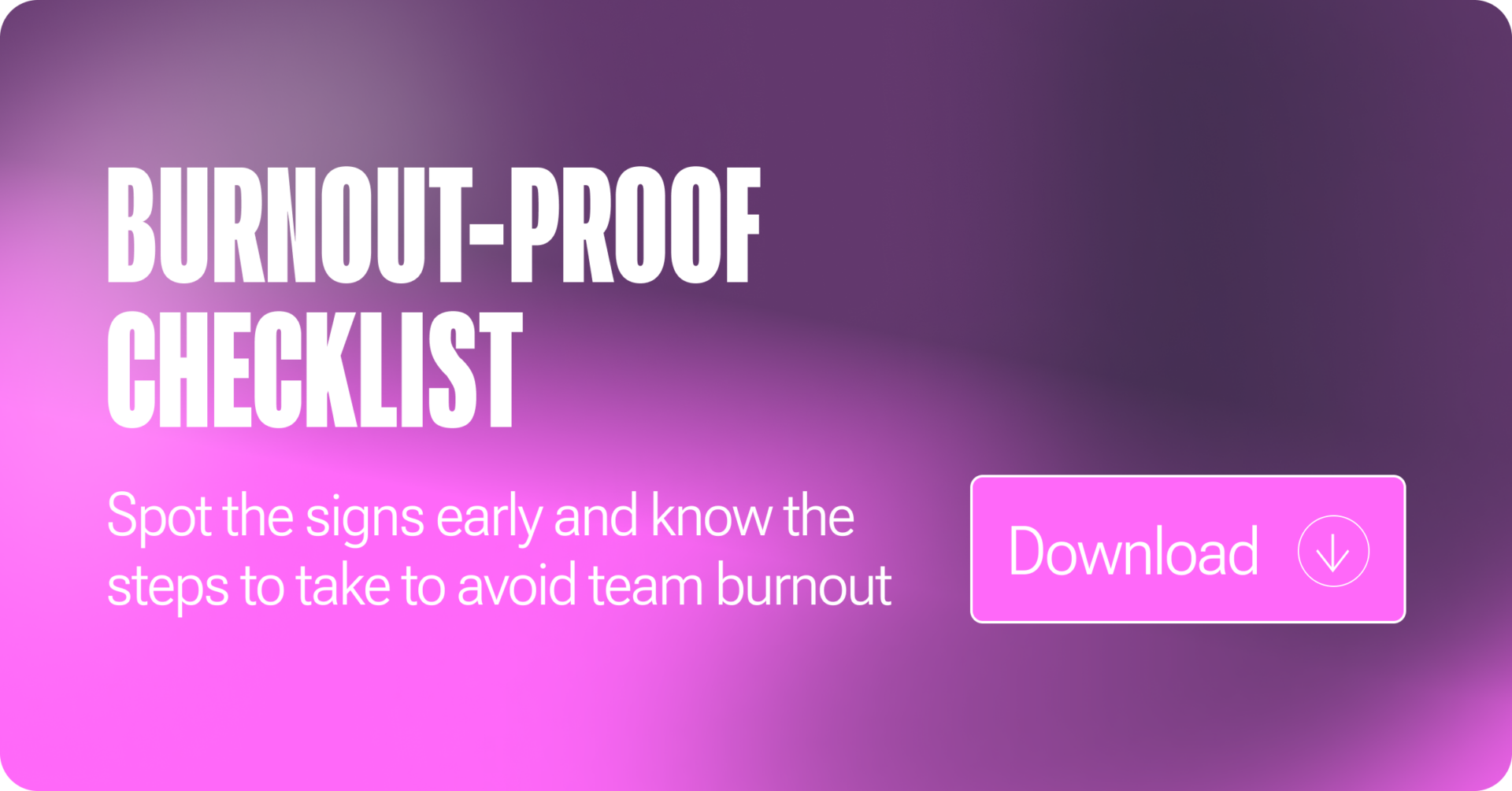Burnout is Real (And Your Team Might Be Toast): A Manager’s Guide to Spotting and Fixing Employee Burnout

Ever looked around your virtual team meeting and thought, “Yikes… everyone looks exhausted”? That, my friend, is burnout. And it’s sneakier than a last-minute scope change.
If you’re a project, delivery, or resource manager trying to hit deadlines without turning your team into a flock of overworked zombies, this guide’s for you. We’ll break down what burnout looks like, how to catch it early, and (most importantly) how smarter capacity planning and resourcing can actually prevent it from happening in the first place.
What Is Employee Burnout? (Hint: It’s Not Just “Feeling Tired”)
Burnout isn’t fixed by one good night’s sleep. According to the World Health Organization, burnout stems from chronic, unmanaged workplace stress. Cue exhaustion, detachment, and your team low-key browsing LinkedIn during planning calls.
Burnout feels like that meme of the dog in the burning room saying, “This is fine.” It starts with enthusiasm, then slowly spirals into “please don’t assign me one more thing.” Gallup reports that almost two-thirds of full-time workers experience burnout. And that’s just the folks who admitted it.
💡 If your team thinks “being out sick” sounds more restful than “being on PTO,” it’s time to intervene.

The Warning Signs of Burnout (AKA Red Flags You Might Be Ignoring)
Burnout doesn’t knock on the door. It slips in through the cracks of poor resource planning and stretched bandwidth. And while the obvious signs are easy to spot, it’s the quieter ones that can do real damage.
Watch for:
- A dip in quality or missed deadlines.
- Sudden mood swings or disinterest.
- “Doctor’s appointments” that suspiciously align with high-stress sprints.
- Ghosting team chats or answering everything with a 👌.
- Silence from your class clown (humor is usually the last thing to go).
🧠 Pro tip: Frequent, open check-ins where “I’m overloaded” is a safe response, can help you catch this stuff early.
The Fix: Smarter Resourcing = Healthier Teams
Fixing burnout doesn’t mean adding a Friday “fun” Zoom or sending out more inspirational Slack messages. It means tackling the root cause: unrealistic expectations paired with poor visibility.
Here’s how to prevent burnout before it starts:
1. Use Capacity Planning to See the Whole Picture
Your best people are often the most overloaded. A strong capacity plan shows you who’s at risk before they hit the breaking point. Stop assigning based on who “feels” available and start resourcing based on real, up-to-date data.
2. Forecast Demand So You’re Not Always Playing Catch-Up
Running from fire to fire? That’s a sign your project forecasting is reactive, not proactive. Better forecasting = fewer last-minute scrambles = a calmer team. It also means you can plan hiring before you hit the wall.
3. Balance Workloads Without the Guesswork
Overloading your top performers might feel like a shortcut, but it’s a fast track to burnout. Use tools that help you see work distribution clearly and shift tasks before someone gets buried.
4. Give People Flexibility (And Actually Mean It)
Burnout doesn’t thrive where there’s trust. Offer flexible schedules, async work, or reduced-hour weeks when you can. Then go a step further, make sure your capacity planning can support those choices without derailing delivery.
5. Recognize Good Work in Real Time
Recognition isn’t fluff. It’s fuel. Celebrate when someone prevents a crisis, streamlines a process, or mentors a new team member. Small shoutouts help keep morale high, and they’re more sustainable than surprise pizza parties.
Nobody Wants Toast (Unless It Comes With Avocado)
Burnout isn’t a badge of honor, it’s a warning sign. But when you have the tools to forecast work, plan capacity, and distribute tasks thoughtfully, you can build a culture that supports productivity and people.
Ready to make burnout prevention part of your operational strategy? We made you a handy checklist to spot burnout early and fix the underlying resource issues before they flame out your team.
Everything you need to assess team health, balance workloads, and plan ahead like a boss.


